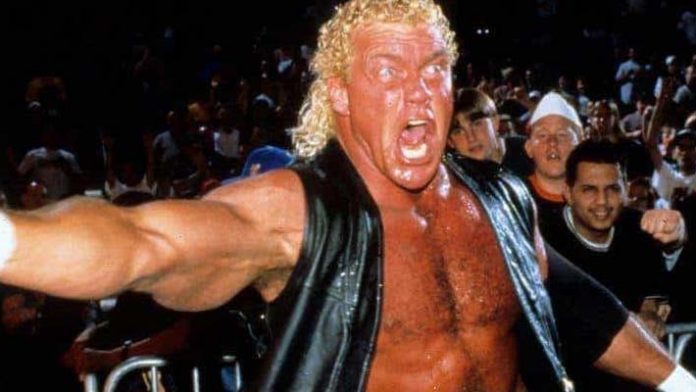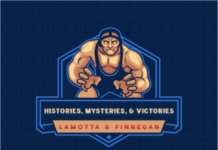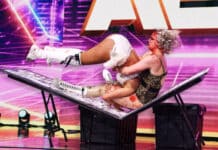
Last week marked 26 years since In Your House:It’s time, a pay-per-view that used the two-hour format before the In Your House series became a full-fledged PPV with the usual three-hour time slot and ultimately put the monthly pay-per-view schedule in place to go head-to-head with World Championship Wrestling for a slice of the PPV pie. It’s interesting to note that the competition from the Turner organization, not necessarily the demand for premium cards every month, was what fueled this decision. It might seem like business as usual when you’re trying to cut into the profit margin of the other group, but the domino effect of this was huge because it completely changed the way pro wrestling was booked. That along with the weekly live television broadcasts almost made the concept of long-term booking an antiquated concept. After the 90s, it was no longer an epic saga that culminated in a big match at Wrestlemania or Starrcade, it was how do we sell a pay-per-view card this month. It might sound trivial since monthly events are so common place now, but the structure of booking wasn’t the same after that decision was made, and you could argue that there are some major pitfalls to that philosophy.
This particular In Your House event isn’t really spoken of in the same way as some of the more memorable shows. Mind Games, Buried Alive, The Canadian Stampede, and Final Four remain topics of discussion for the impact they had on the era.
The show opened with Al Snow working as Leif Cassidy, the doomed New Rockers gimmick during a short stint as a tag team with Marty Jannetty, against Flash Funk, the WWF persona that Too Cold, Scorpio used during this period. This was after Jannetty left the organization so Al Snow was left with a gimmick that was more or less dead in the water at that point. You can see some of the unbalanced bitter heel show through, which was the original premise of the gimmick he attempted to use when he was on loan ECW. Some might remember he still wore the Rockers outfit at the Hardcore Heaven 1997 pay-per-view against Rob Van Dam. For whatever reason, Flash Funk, who was relatively new to the organization, at this time, had a rather extended entrance, and it dragged with minimal crowd reaction before the time the bell rang. Vince McMahon trying to dance at ringside made the stunner he took at Wrestlemania earlier this year look like poetry in motion.
The match itself was solid, resembling something similar to an ECW type match these two could’ve had there, but it was in front of a crowd that wasn’t invested in either performer. There was solid technical wrestling, but there was barely any crowd response. Al Snow had an impressive overhead suplex on the Scorpio over the ropes to the floor and followed up with a dive, but that only garnered a momentary reaction. Scorpio also had a dive outside the ring and the finish saw him hit his trademark 450 splash to get the win, which finally got a pop the crowd . If I had to guess, this match was booked on pay-per-view to theoretically add the in-ring action to the card, but the characters, not necessarily the performers themselves weren’t over with the audience. More than anything, it’s interesting to consider that within a year, Al Snow was on his way to becoming extremely popular in ECW with the head gimmick that defined his career, but during this time, period, despite being a very solid, entertaining worker, he had no direction from a character perspective.
Speaking of characters with no investment or reaction from the crowd, the fake Diesel and Razor Ramon were scheduled to compete against The British Bulldog and Owen Hart for the tag team titles. The imposter Diesel, who, as we know, went on to become Kane, and the phony Razor Ramon were as terrible in retrospect as they were originally. Granted, the use of replacement performers, for those specific characters had more to do with the lawsuit at the time against WCW than trying to salvage the Diesel and Razor personas, but the whole thing was bizarre. The crowd in attendance was just as confused as the rest of us and thus nobody in the building cared about this contest. You can’t expect the audience to offer any response when they know the performers in the outfits aren’t actually Scott Hall or Kevin Nash. Along with that angle, the lackluster Jim Ross heel turn on commentary, didn’t do the segment any favors either. Just like Glenn Jacobs wasn’t Diesel, and Rick Bognar wasn’t Razor Ramon, the attempt at being a heel just wasn’t Jim Ross at the desk.
As far as the actual match, Owen Hart is a smooth and a crisp as you expect, and his s slick maneuvers at least make this match watchable. However, as if bogus versions of former champions wasn’t enough to make this match rather useless, there’s a random cameo from Pierroth and Cibernético since AAA talent were scheduled for the following month’s Royal Rumble. The luchadors went to ringside for seemingly no reason before they left without explanation. After that, Steve, Austin walks to ringside and brawls with Bulldog on the floor. This all happens while the match is still going on so there’s no pace and no focus on a contest that lacked any interest from the audience anyway. I’m not sure what the point of the cameos were or even the match itself. Bulldog and Owen retained but if you skip this match, you’re not missing much of this contest.
Marc Mero challenged for the Intercontinental championship against Triple H, with the angle being the basis for sable’s WWF debut and her eventual role as Mero‘s manager. Don’t get me wrong, this wasn’t a subpar match, but it wasn’t anything spectacular either. It was more or less the basic WWF match you would see during this era, and Triple H lost via count out, which was a completely flat finish.
For what was promoted as an Armageddon match, which was essentially a Texas Deathmatch, the Executioner squared off against The Undertaker. An all-time great as one of the Fabulous Freebirds, Terry Gordy had an accidental overdose on pain medication during a flight to Japan that left him with brain damage in the early-90s, and he wasn’t the same in the ring for the rest of his career. Reportedly a favor to Michael Hayes, Gordy was given the generic role as The Executioner during The Undertaker’s original feud with Mankind. While it was nice that Gordy was able to make some cash in the WWF for the two months he was there, it’s just sad to see the legendary wrestler a shell of himself throughout dispatch. The wild trademark Gordy punches looked rather sloppy and he moved in the ring almost as if he was unsure of himself as opposed to being such a natural during the prime of his career. There weren’t any signature Gordy bumps or intensity during this segment. It was a very basic subpar match, and I’m guessing that’s why midway through the contest Mankind attacked The Undertaker. There was a brawl through the aisle and Gordy was temporarily thrown outside the arena. Mankind got sent sailing through part of the In Your House set before security eventually put him in a straight jacket. The Executioner eventually returned, but The Undertaker hit a tombstone to get the win.
The main event seemed to be more to set up the originally scheduled Bret Hart/Shawn Micheals rematch at Wrestlemania from the previous year more than anything else. This match was fine, but Sid had some really clumsy moments, and event Bret Hart could’ve cover for it. It wasn’t a subpar match, but not the quality you’d associate with a Bret Hart main event, which was based on his opponent. The finish saw Sid taunt Micheals, who got on the apron, but Bret was sent crashing into him, sending HBK to the floor, and that allowed Sid to hit the power bomb to retain the belt. As we know, Micheals went on to beat Sid at The Royal Rumble in his hometown, and since Bret had a claim to the championship based on this disputed finish at In Your House, that would’ve set up for the Wrestlemania rematch. Conveniently, Shawn “lost his smile” and vacated the championship to avoid dropping it to Bret to set up for the rubber match.
Essentially, In Your House:It’s Time isn’t mentioned with the other IYH events because the card was more or less forgettable, and the conclusion of the main event was booked to set up a title match that didn’t happen at Wrestlemania that year.
What do you think? Share your thoughts, opinions, feedback, and anything else that was raised on Twitter @PWMania and Facebook.com/PWMania.
Until next week
-Jim LaMotta
E mail [email protected] | You can follow me on Instagram & Facebook @jimlamotta89






